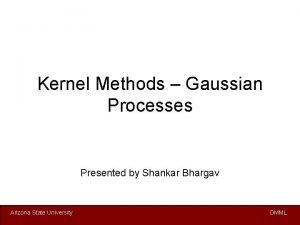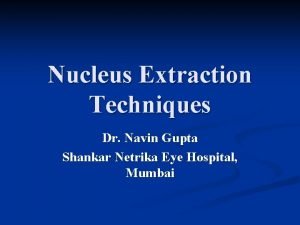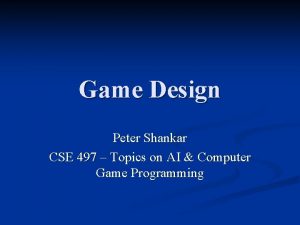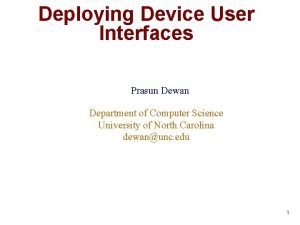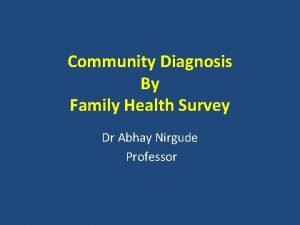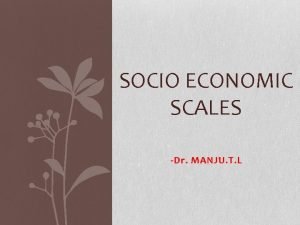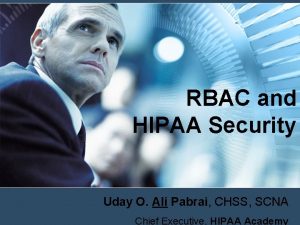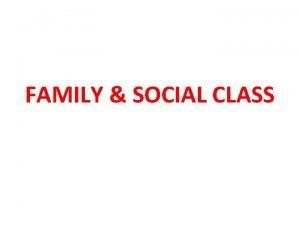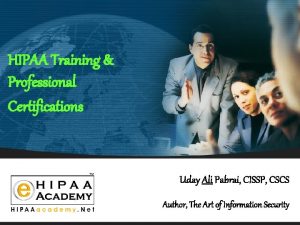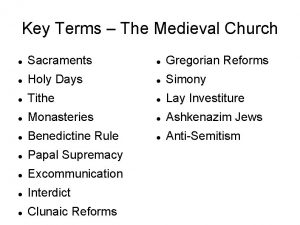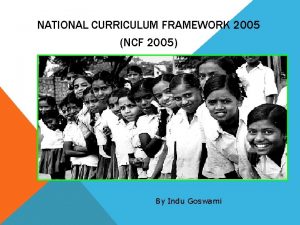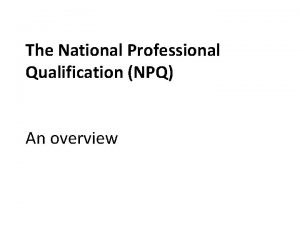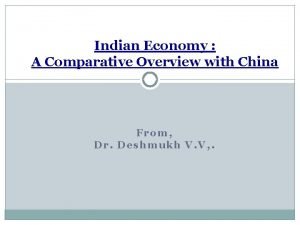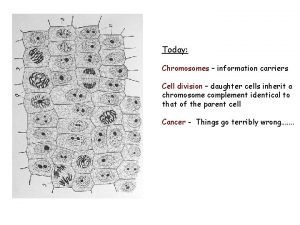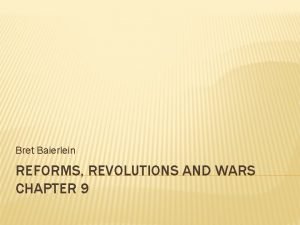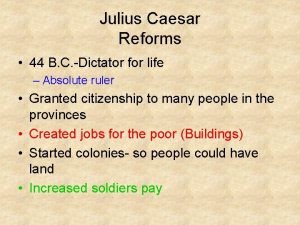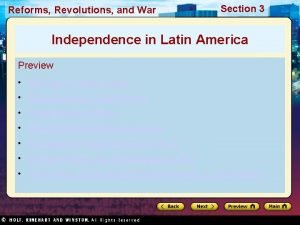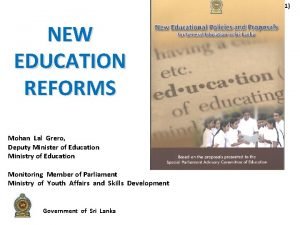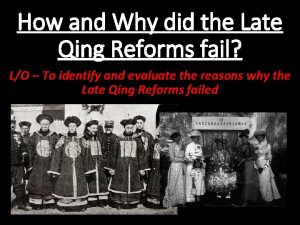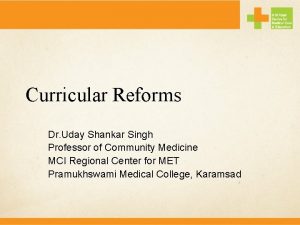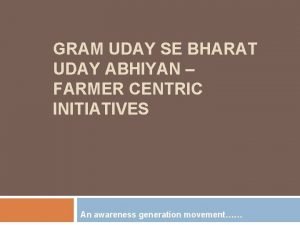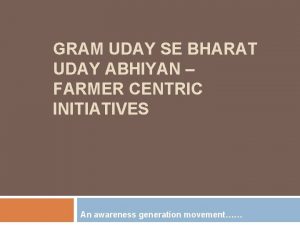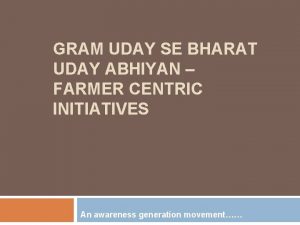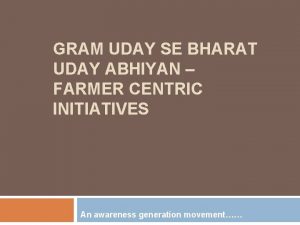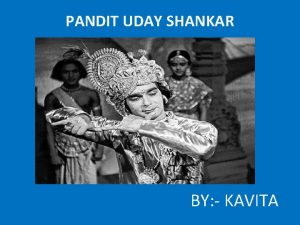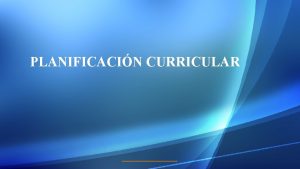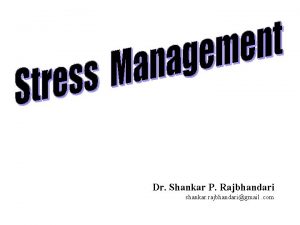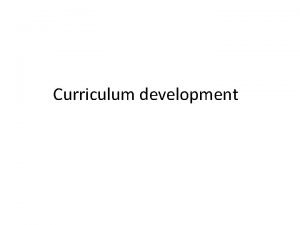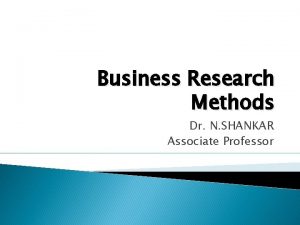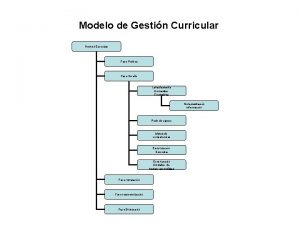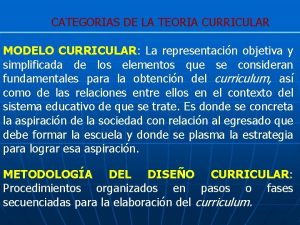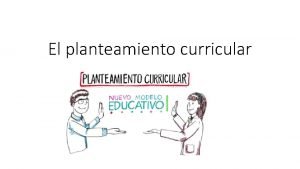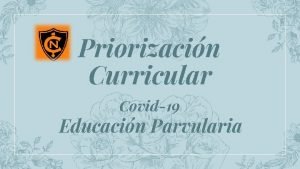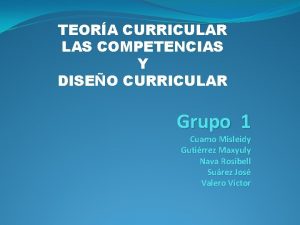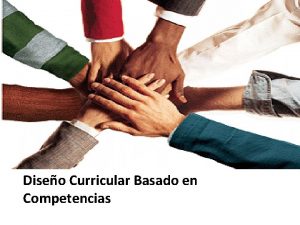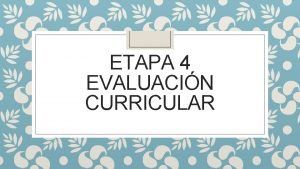Curricular Reforms Dr Uday Shankar Singh Professor of










































- Slides: 42

Curricular Reforms Dr. Uday Shankar Singh Professor of Community Medicine MCI Regional Center for MET Pramukhswami Medical College, Karamsad

Objectives of session • Describe curriculum • Explain needs for curricular reform • Enumerate new elements in curricular reform • Explain rationale for new approaches • Describe strategies and challenges in implementation

What is Curriculum?

Curriculum It is the planned interaction of pupils with instructional content, materials, resources, and processes for evaluating the attainment of educational objectives. In General: What should happen in a teaching program – about the intention of the teachers and about the way they make this happen

A Wider View of Curriculum Contents Educational Strategies Learning outcomes The curriculum Learning opportunities Educational environment Assessment

Unaddressed aspects of medical care?

Unaddressed aspects of medical care • Communication skills • Health promotion and disease prevention • Clinical procedures; e. g. CPR • Professionalism including development of attitudes and understanding of ethical principles

Challenge for MCI Need for more medical colleges Vs Maintenance and improvement of quality standards

MCI Vision 2015

Areas addressed Graduate medical education Postgraduate medical education Examination pattern Ethics of medical practice Equivalence of various degrees and courses Enhancement of remunerations of medical teachers Standards for accreditation of medical education

MBBS Course

Indian Medical Graduate (IMG) To create doctors – with requisite knowledge, skills, attitudes, values and responsiveness so that they may function appropriately and effectively as Basic Doctor

Roles of IMG • Clinician - preventive, promotive, curative, palliative, and holistic care with compassion • Leader and member - health care team and system with capabilities to collect, analyze and synthesize health data • Communicator - patients, families, colleagues and community

Roles of IMG • Life long learner - committed to continuous improvement • Professional - committed to excellence, ethical, responsive and accountable to patients, community and profession

Competencies In order to fulfill above roles, medical student should have obtained a set of competencies at graduation

Traditional Curriculum Behavioural Science Clinical Studies Biological Sciences

Inverted triangle curriculum Clinical studies Basic Sciences

Total integration model Professional development Population Sciences Behavioural Sciences Biological Sciences Clinical Studies Clinical and communication skills

Spices Model of educational strategies Student centered Problem based Integrated Community based Electives Systematic Teacher centered Information gathering Discipline based Hospital based Standard Opportunistic

Recommendations of UG group Foundations course Integration: Vertical and Horizontal Early Clinical exposure Student doctor method of clinical Training Electives Skill Development & Training Secondary Hospital Exposure Adoption of contemporary educational technologies

Rationale for Approaches Foundation Course: Prepare the student for medical studies

Electives: Provide opportunity for flexible learning and development of research skills, implementation of projects

Early clinical exposure: To provide the understanding of relevance of basic and laboratory science in the clinical context , exposure to integrated learning

Horizontal and vertical integration: Develop a student knowledge base that is relevant to practice, rational and promotes a stepwise acquisition and application of knowledge and skills.

Student Doctor Method of Clinical Training (Clerkship): Development of competence in clinical care, longitudinal learning experience, functioning within a team and acquiring procedural skills.

Integration of principles of family medicine: Exposure to issues related with managing patients in multi-competency clinical care.

Clinical exposure at secondary care level: Development of clinical skills with focus on common diseases.

Competency based training: To function effectively as basic doctor

Self directed learning: To encourage life long learning skills

Integration of ethics, attitude and professionalism in all phases: To promote ethical practices

Acquisition and certification of skills: To have uniform standard of Indian Medical Graduates (IMG)

Recommendations of UG group Foundations Course Early Clinical Exposure Integration: Vertical and Horizontal Skill Development & Training Electives Student Doctor Method of Clinical Training Secondary Hospital Exposure Adoption of Contemporary Educational Technologies

Foundation Course Goal: The main purpose of foundation course at entry level is to sensitize the learners with essential knowledge and skills which lay foundation for their pursuit of learning across all phases in MBBS course and later on in their careers in medicine

Objectives of Foundation Course Orientation of student to Medical profession & physician’s role in society MBBS program Alternate health systems in country Medical ethics, attitude and professionalism Health care system and its delivery

Objectives of Foundation Course Orientation of student to National health priorities and policies Patient safety and biohazard safety Principles of family practice Indian medical graduate document of MCI The medical college and hospital

Objectives of Foundation Course Enable students to acquire skills in Language Interpersonal relationship Communication Learning skills including self directed learning Time management Stress management Use of information technology

Objectives of Foundation Course Train the student to provide • First aid • Basic life support

Key features of foundation course Eight weeks- 266 hours 10% self directed learning Week one and two Foundation elements only Week three to eight Foundation elements plus Subject foundation modules Integrated cell biology module Language course (Local and English) Computer skills

Integration

Early clinical course To understand relevance of basic and laboratory sciences in clinical context, exposure to integrated learning

Competency based learning To acquire competencies in secondary context with focus on common diseases

Thank you For your kind attention
 Sarwan singh kundan singh
Sarwan singh kundan singh Sujay shankar
Sujay shankar Shankar gupta
Shankar gupta Peter shankar
Peter shankar Shankar ponnekanti
Shankar ponnekanti Humpty dumpty shankar nagar raipur
Humpty dumpty shankar nagar raipur Promotion from associate professor to professor
Promotion from associate professor to professor Uday hiwarale
Uday hiwarale Uday khankhoje
Uday khankhoje Uday pareek scale
Uday pareek scale Uday mitra iisc
Uday mitra iisc Udai pareek scale
Udai pareek scale Uday ali pabrai
Uday ali pabrai Uday pareek scale
Uday pareek scale Certified hipaa administrator
Certified hipaa administrator Uday devgan md
Uday devgan md Higher history britain essays
Higher history britain essays Gregorian reforms
Gregorian reforms Kumar mangalam birla committee
Kumar mangalam birla committee Ncf curriculum framework 2005
Ncf curriculum framework 2005 Tanzimat reforms definition
Tanzimat reforms definition Laquan mckever
Laquan mckever Npqsl project examples
Npqsl project examples Reforms in the antebellum period
Reforms in the antebellum period Tanzimat reforms definition
Tanzimat reforms definition Economical comparative and superlative
Economical comparative and superlative Triangle shirtwaist factory fire led to which reforms
Triangle shirtwaist factory fire led to which reforms Lord cornwallis introduced
Lord cornwallis introduced Spindle fibers
Spindle fibers Summary of the punic wars
Summary of the punic wars Napoleon economic reforms
Napoleon economic reforms Phrenology apush
Phrenology apush The modern colossus of railroads political cartoon meaning
The modern colossus of railroads political cartoon meaning Wars revolutions and reforms
Wars revolutions and reforms Morley minto reforms
Morley minto reforms Julius caesar reforms
Julius caesar reforms Peaceful crusade or campaign for reforms
Peaceful crusade or campaign for reforms Reforms revolutions and war answer key
Reforms revolutions and war answer key Mohanscience lk
Mohanscience lk Future of financial advice reforms
Future of financial advice reforms Education sector reforms in pakistan
Education sector reforms in pakistan Bbc bitesize liberal reforms
Bbc bitesize liberal reforms Late qing reform
Late qing reform

